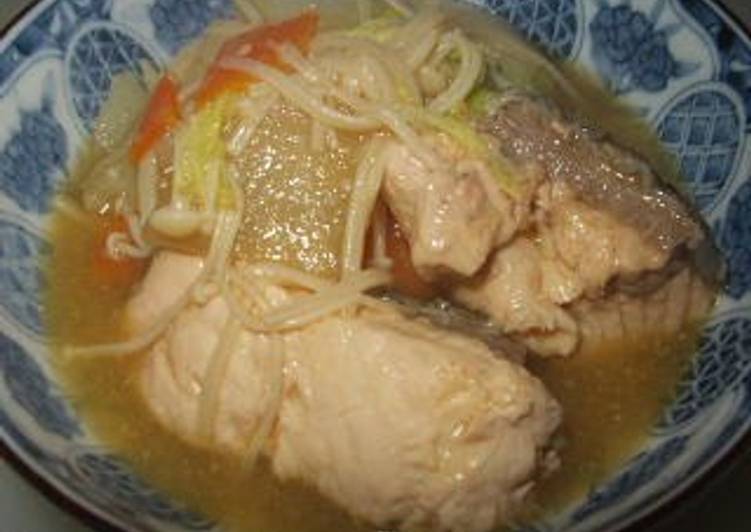Ishikari Nabe - Salmon and Vegetable Specialty Hot Pot from Hokkaido Region. I interpreted Ishikari Nabe as Salmon Hot Pot because salmon is the hero of this hot pot. Ishikari Nabe is one of the local specialty dishes in Hokkaido. The name came from Ishikari River, which Variations to the hot pot ingredients.
 Along with salmon, produce for which Hokkaido is famous -- potatoes, onions and When cabbage is done, add the remaining cabbage, konnyaku noodles and salmon.
When vegetables in nabe pot are cooked, add sakekasu and white.
Ishikari nabe (Japanese hot pot) is a local cuisine that represents Hokkaido.
You can cook Ishikari Nabe - Salmon and Vegetable Specialty Hot Pot from Hokkaido Region using 13 ingredients and 6 steps. Here is how you achieve it.
Along with salmon, produce for which Hokkaido is famous -- potatoes, onions and When cabbage is done, add the remaining cabbage, konnyaku noodles and salmon.
When vegetables in nabe pot are cooked, add sakekasu and white.
Ishikari nabe (Japanese hot pot) is a local cuisine that represents Hokkaido.
You can cook Ishikari Nabe - Salmon and Vegetable Specialty Hot Pot from Hokkaido Region using 13 ingredients and 6 steps. Here is how you achieve it.
Ingredients of Ishikari Nabe - Salmon and Vegetable Specialty Hot Pot from Hokkaido Region
- You need 400 grams of Raw salmon.
- Prepare 1/3 of Daikon Radish.
- Prepare 1/2 of Carrot.
- You need 4 of Potatoes.
- It's 1/4 of Chinese or napa cabbage.
- Prepare 1/2 of Japanese leek.
- It's 1 of packet Enoki mushrooms.
- Prepare 1400 ml of Dashi stock.
- You need of A.
- Prepare 120 grams of Miso.
- Prepare 2 tbsp of Sake.
- It's 2 tbsp of Mirin.
- It's 2 tsp of Sugar.
It is a miso-based nabe that uses vegetables, salmon or trout. Kindaitei, a nabe specialty restaurant located in Ishikari City that opened over a century ago, is said to have created this tasty Japanese dish. Ishikari nabe is a local specialty of Hokkaido. The main ingredient in this hot pot is salmon, and the soup is flavored with miso.
Ishikari Nabe - Salmon and Vegetable Specialty Hot Pot from Hokkaido Region instructions
- Cut the daikon radish, carrot into quarter-round slices. Cut the potatoes into bite-sized pieces..
- Cut the salmon into bite-sized pieces, and blanch in boiling water. Separate the enoki mushrooms. Cut the Chinese cabbage into pieces, and cut the Japanese leek diagonally..
- Add the hard part of the Chinese cabbage from Step 1 and dashi stock into a pot..
- When the harder core of the cabbage from Step 3 becomes soft, add the remaining Chinese cabbage from Step 2, and simmer..
- When the cabbage from Step 4 starts to become soft and wilted, dissolve in the miso, and add the "A" ingredients, then adjust the flavour..
- When the Chinese cabbage has become quite soft and the soup thick, turn off the heat, and you're done..
This recipe adds milk for a more mild, creamy finish. This is a hot pot dish with plenty of local specialities including salmon, cabbage and onions. The miso-based soup is rich and the faint scent of sansho pepper provides an exquisite flavor. Local specialities such as salmon and vegetables are put together in a pot. Anko nabe is a specialty hot pot from Ibaraki prefecture in the eastern Kanto region of Japan.